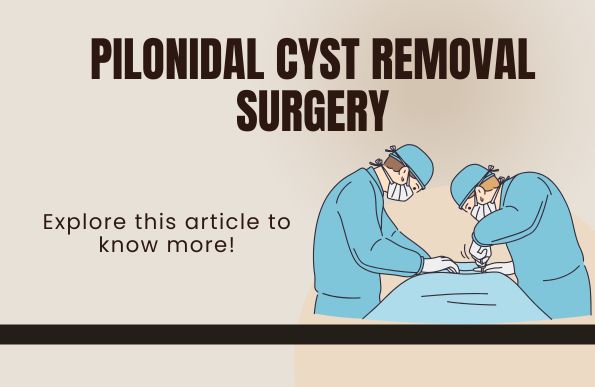Do you suffer from the pain of pilonidal cysts? Surgery might be the solution you need. Pilonidal cysts, often caused by trapped hair follicles, can be extremely painful and inflamed.
This article explores various surgical options available for removing these cysts. Traditional excision and primary closure are standard methods.
Innovative procedures like the Bascom cleft lift and laser ablation offer new alternatives. Understanding your choices can help you make informed decisions about your treatment.
Learn about the benefits and considerations of each method to find the best approach for your condition.
1. Excision and Primary Closure
Excision and primary closure represent the cornerstone of surgical intervention in pilonidal cyst removal surgery cost and offer a traditional yet effective technique for cyst elimination.
Using this method, the doctor carefully cuts out the cyst and surrounding inflamed tissue before the final wound is sutured. This method speeds up the recovery process and reduces the risk of recurrence, especially for smaller cysts.
However, it is crucial to understand that while excision and primary closure have valuable results for many patients, this approach will not be suitable for people with more complicated or recurrent cases of pilonidal disease.
2. Bascom Cleft Lift Procedure
The Bascom cleft lift procedure is a progressive approach to pilonidal cyst removal. It addresses the underlying causes of cyst formation while minimizing tissue trauma. Unlike conventional techniques, this procedure involves making an incision along the midline of the buttocks. Sinus tracts and cysts are excised, but significant tissue is spared.
By focusing on the anatomical factors that lead to cysts, this technique speeds up recovery and reduces the chance of recurrence. It offers a more sustainable option for patients.
Additionally, the Bascom cleft lift has a lower incidence of postoperative complications. Recovery times are shorter than traditional methods, making it an attractive choice for those seeking optimal outcomes with minimal disruption to their daily lives.
3. Limberg Flap Procedure
For individuals dealing with complex or recurrent cases of pilonidal disorder, the Limberg flap system is proving to be a valuable treatment alternative.
This surgical technique involves creating a flap of skin from the nearby tissue, which is then applied to cover the wound created after cyst removal.
Using the Limberg flap, surgeons can facilitate delicate wound recovery, minimize the risk of future infections, and ultimately improve long-term outcomes for patients facing severe pilonidal disease.
While the procedure may require a longer recovery time than other techniques, its ability to permanently alleviate symptoms and reduce recurrence underscores its effectiveness in managing challenging cases of pilonidal disease.
4. Laser Ablation
Laser ablation is a leading minimally invasive surgical strategy for pilonidal cyst removal. It offers a promising alternative to traditional methods. A specialized laser targets and removes cysts and infected tissue during laser ablation without requiring large incisions or stitches.
This approach provides several benefits. It reduces postoperative pain, speeds up healing time, and minimizes scarring, which increases the patient’s comfort and satisfaction during treatment.
However, laser ablation is unsuitable for all patients or cases of pilonidal disease. Careful consideration of the individual condition is necessary to determine the most appropriate treatment method.
Cost of Pilonidal Surgery
Surgical excision is the best available treatment option for pilonidal cysts· However, the cost of the process is an essential factor to consider· It can significantly affect your price range as the fee varies based on the type of surgery, the experience of the doctor and the distance from the treatment center · Expect to pay, typically, between $3,000 and $8,000 for the following:
- Preoperative consultations
- Surgical costs
- Anesthesia
- Preoperative care
Therefore, it is very important for patients to openly discuss the anticipated costs with their healthcare providers and identify available financing or insurance alternatives to ensure the remedy’s availability and affordability.
The healing journey after the surgical removal of a pilonidal cyst involves a multidimensional approach to optimize healing and vitality. While the specifics of the recovery process may vary depending on the type of procedure performed and the individual patient’s factors, certain overarching principles govern the post-surgery timeline.
Patients may experience varying levels of pain and limited mobility immediately following surgery. This necessitates adherence to prescribed pain management protocols and medications.
Careful wound care, including daily cleaning and dressing changes, prevents infections and promotes optimal healing. As days and weeks progress, patients should engage in regular activities while prioritizing sufficient rest and relaxation to facilitate the body’s natural healing processes.
While recovery can present challenges, maintaining open communication with healthcare providers and keeping scheduled follow-up appointments are essential to ensure a smooth and successful recovery journey.

